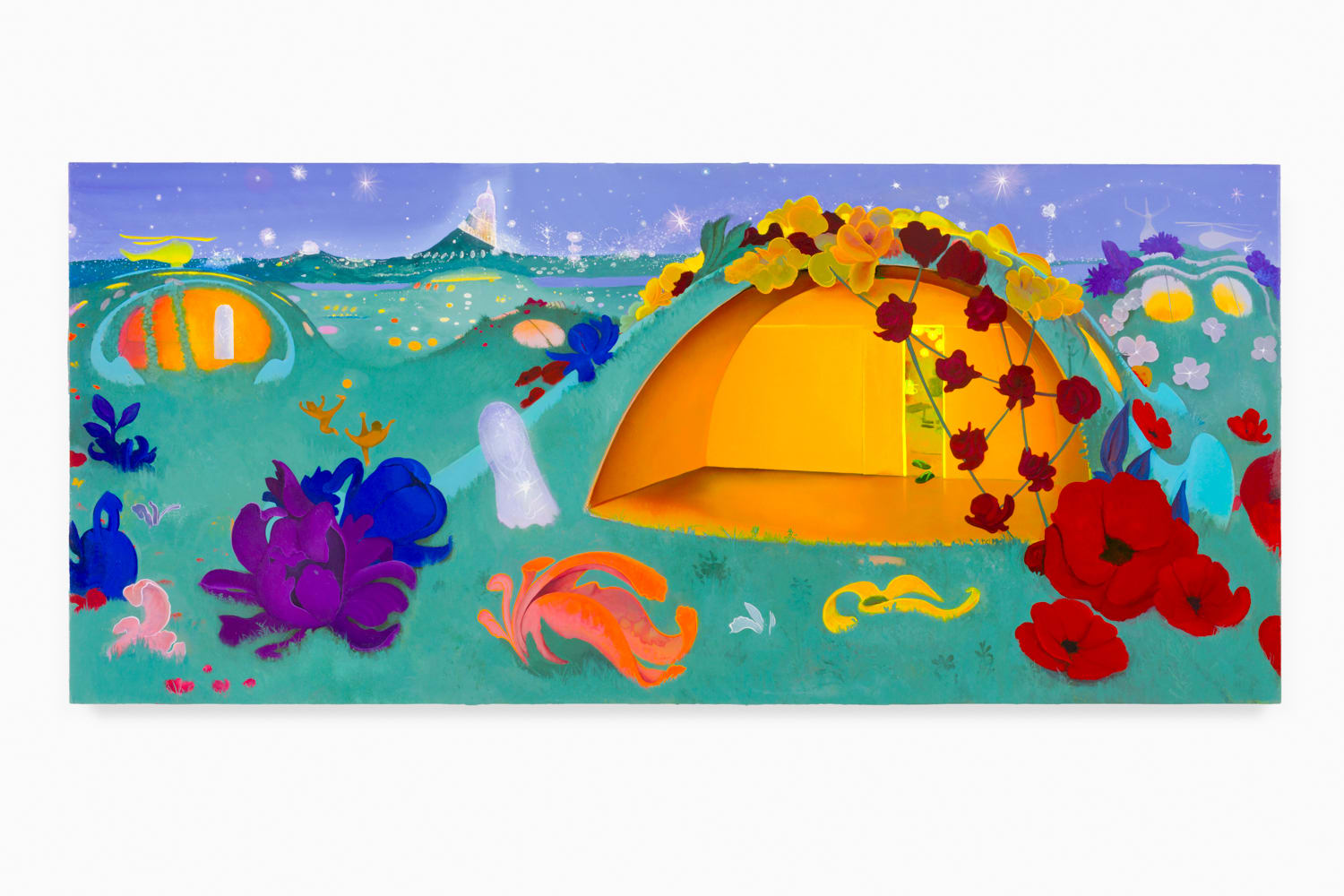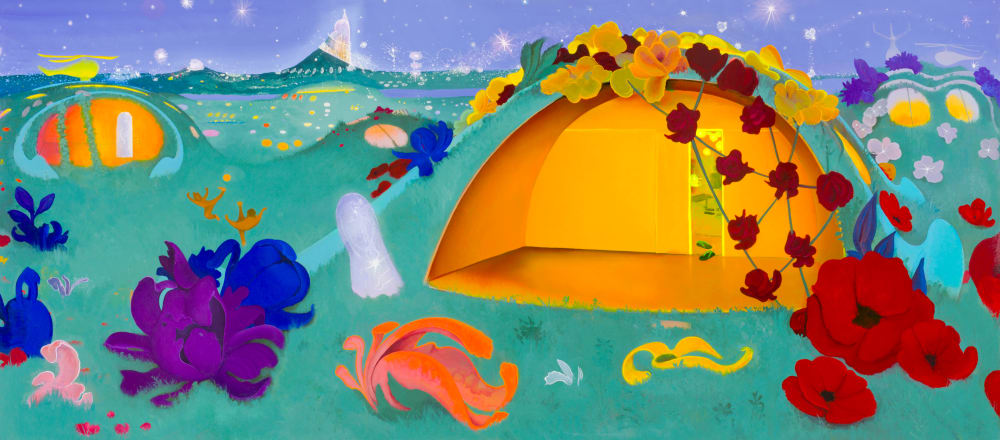Inka Essenhigh USA, b. 1969
New Jersey 2600 C.E., 2019
Enamel on canvas
35 1/2 x 80 x 2 in
90.2 x 203.2 x 5.1 cm
90.2 x 203.2 x 5.1 cm
6971
Further images
In New Jersey 2600 C.E., we see two children playing with a ball, watched over by a studious hologram of their domestic computer, backlit by the drone shipping lanes over...
In New Jersey 2600 C.E., we see two children playing with a ball, watched over by a studious hologram of their domestic computer, backlit by the drone shipping lanes over Manhattan. Essenhigh envisions this depiction as a typical dwelling on the 27th century Eastern seaboard, with residents living in subterranean homes woven into the hills, covered over with sod. Horticultural technology is such that natural and artificial growth patterns are united in common ecosystems, with targeted application towards climate-engineering. Building homes down into the Earth provides structural benefits while also integrating with nature for both environmental and visual harmony. This painting is part of Inka Essenhigh’s Uchronia series, which envisages a hypothetical, idyllic future for the inhabitants of Earth. Questioning whether our species will adapt to the challenges of the late Holocene or follow the path to extinction forged by countless other species, Essenhigh imagines the multitude of plausible realities towards which we might be headed. She wonders: “Can painting a beautiful future help make it come true? If we have a picture of what we want, can we head towards that?” Like ancient, Roman murals, whose fractured scenes remind us that violence and mysticism was part of our past nature, Essenhigh’s Uchronic images show our progeny living in harmony with nature in a blazing world, re-telling the human story to affect our imagined destiny. “The paintings do not show a complete picture,” says Essenhigh, “but rather fragments where we have to wonder how much is symbolic, how much is abstracted, or how much is literal." Says Essenhigh, "This Uchronia may have problems. All these paintings show is that the biggest threat to our survival—ecological extinction—has been solved. I’m not posing these pictures as definitive answers. I’m posing them as possibilities—a way to begin the conversation about what we want our future to look like. Some of the paintings are presented as relics, as if to implant a memory in the viewer’s subconscious. The question is, do we believe it?”








